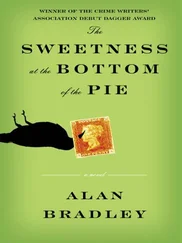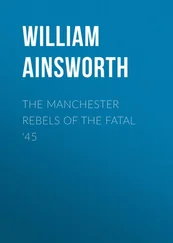The witch doctor’s formal name was Suherman Bangun. The villagers, with a mixture of affection and awe, called him Pak Dirman. Bangun had been born forty-three years earlier in Medan before retreating into the mountains to farm corn and exercise his mystical talents. Though Bangun was a Muslim, many of those who sought his help, including Dowes, were Christian. “His reputation is very famous,” Bangun’s wife, Rintang Boru Ginting, boasted to me when I later caught up with her in the village. “His patients come from many faraway places.” Rintang herself had been his first patient, she recalled. Not long after the birth of their second child, he had removed a tumor from her neck, carving it out with a razor blade, then sealing the flesh by spitting betel nut juice on it and reciting a spell.
Dowes proved to be a more trying case. The nighttime treatments failed to dispel the affliction. Each new dawn found Dowes fighting harder for his breath. Late on his fourth night at the witch doctor’s home, hours after Uyeki had made his futile appeal to the family, Dowes got up to use the bathroom. Since there was no toilet there, his uncle wrapped his arm around him and helped him walk next door. Dowes could hardly breathe. He was staggering, on the brink of collapse. His condition had taken an abrupt turn for the worse since the previous day. “He was almost unconscious,” one relative later recalled.
Bangun advised the family there was nothing more he could do. So the uncle wrestled Dowes to the Suzuki jeep parked out front. Together with an aunt and two cousins, they drove out of the valley and began racing through the dusky daybreak back toward Kabanjahe and the district hospital. Before they made it, Dowes died.
In the highland village of Kubu Sembilang where Dowes and his family had lived, the Suzuki jeep was a rare luxury. The vehicle had originally belonged to Dowes’s father, the patriarch of the Ginting clan, until he died in 2001. Though most everyone in Kubu Sembilang came from generations of hardscrabble peasants, Dowes’s father, Ponten, had also been a gangster. In fact, in that corner of Sumatra, he had been the godfather, running protection and extortion rackets throughout the environs. It was said he had won his power by conjuring evil spirits. His criminal pursuits had earned the family a measure of respect and riches. But the Gintings remained essentially farmers, spending their days in orange and lime orchards and fields heavy with red chili peppers.
Ponten had five children, three boys and two girls, with Dowes in the middle. The eldest sister, thirty-seven-year-old Puji, peddled the family produce at a traditional market in the neighboring town. Villagers from the surrounding area of Karo district came to buy clothes, shoes, and other dry goods from stalls in the heart of the market. Puji’s stand was near the edge with the other fruit, vegetable, and meat mongers, about twenty yards from a kiosk hawking live chickens. After she fell fatally ill, WHO investigators hypothesized she had contracted the flu virus at that nearby poultry stall, though samples later taken in the market all came back negative. Investigators also suggested she could have been infected by contaminated chicken droppings that she used as fertilizer in her garden.
Puji started feeling unwell on April 24, 2006, less than a week before the people of her village were to celebrate their annual harvest festival, Merdang Merdem. She began to cough and her temperature climbed. Her sister massaged Puji’s throbbing muscles and tried unsuccessfully to nurse her to health. Her family decided to proceed with their thanksgiving anyway.
Tradition is an essential ingredient of daily life in the district. The Karo people are Bataks, a distinct ethnic group within Indonesia known for a stubborn streak and a fierce adherence to their own culture and beliefs. In the past, the Bataks were storied as ferocious warriors. Today they are leading officers in the Indonesian military and some of the most formidable lawyers in Jakarta. Inevitably the fearless bus drivers who career through the capital’s tortured traffic are also Bataks. While the Javanese of Indonesia’s main island are refined, aloof, and at times duplicitous, the Bataks can be coarse but also refreshingly candid.
The festival brought together all five Ginting siblings, their spouses, and their children. They gathered at the small house, facing the village soccer field, where Puji lived with her husband and three sons. It was a wooden dwelling with a sun-bleached blue facade and pitched corrugated metal roof crowned by a satellite dish. Chickens rooted around in the dirt out back. Directly next door, her sister lived with her husband, two daughters, and son in a larger, more robust, cream-colored home built from concrete and tile, also capped by a satellite dish. Just beyond that was where her brother Dowes resided with his wife and two sons. His home was the most modest of the three, a small, unpainted clapboard structure.
The celebration began just after sunrise and continued until nightfall, the family feasting on curried chicken and roasted pork served in a spicy sauce prepared from pig’s blood, while the children played in the dirt road out front. In olden times, the harvest festival would last seven days, culminating with a communal feast and folk dancing that doubled as matchmaking for the girls and boys of the village. The holiday had in recent years been condensed to one day. But as they always had, relatives who’d moved away from the village came back to celebrate. So the youngest of the Ginting siblings, a twenty-five-year-old kid brother named Jones, who had left the village to start his own family in the district capital, returned with his wife and two sons.
Once the party finished, it was too late for Jones and his family to go home. They stayed over at Puji’s house, sleeping in the same confined quarters with her and her children and two other relatives. It was a rough night, nine people crammed into one small space with Puji coughing uncontrollably.
Three days after the festival, the family brought Puji to the emergency room at the district hospital. She could hardly breathe, and her skin was turning blue from a lack of oxygen in the blood. The doctors gave her medicine and advised the family to take her to Santa Elisabeth Hospital in Medan, about fifty miles away along the coast, where she was admitted into the intensive care unit. Santa Elisabeth was one of the best medical facilities in Sumatra, a seventy-five-year-old Catholic hospital opened by Indonesia’s former rulers, the Dutch. Inside the colonial structure, the black-and-white marble corridors were spotless. The interior courtyards were meticulously maintained with manicured lawns, sculpted shrubbery, and flowering bushes. Patients and their families waiting in the main lobby, with its high stained-glass windows, spoke only in hushed tones. By contrast with the crowds and chaos at Indonesia’s public hospitals, everything about Santa Elisabeth was orderly and organized. But that wasn’t enough. On May 4, after only twelve hours in intensive care, Puji died. The precise cause of death was never determined. No samples were taken, and no one suggested at the time it could be bird flu.
But by the time Puji was buried a day later, six other family members were already sick. Most had gone to their village’s rudimentary health post complaining of fever and breathing difficulties, but found no relief. As they continued to grow weaker, even talking became a chore.
“The doctors were shocked,” recalled the district health chief, Dr. Diana E. Ginting, who was no relation to Puji and her family. “The chest X-rays were all white.” Their lungs had filled with fluid. The clinic doctor was the first to suspect they had caught a novel flu strain and sent them to Adam Malik General Hospital in Medan, which had been designated by the Indonesian government as the referral facility for all bird flu cases in the region.
Читать дальше











